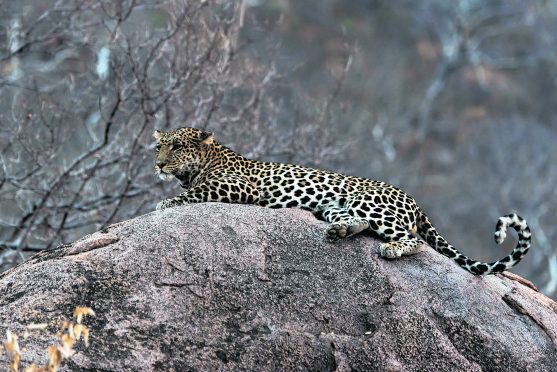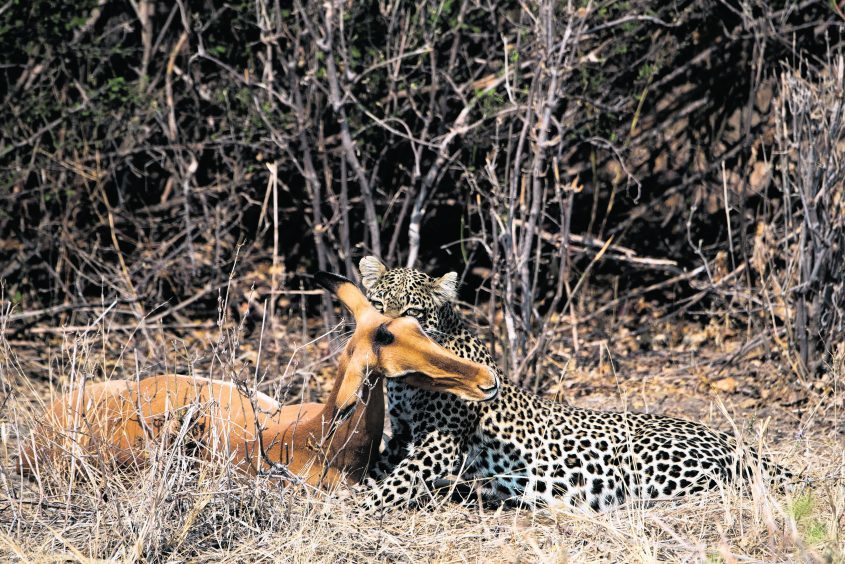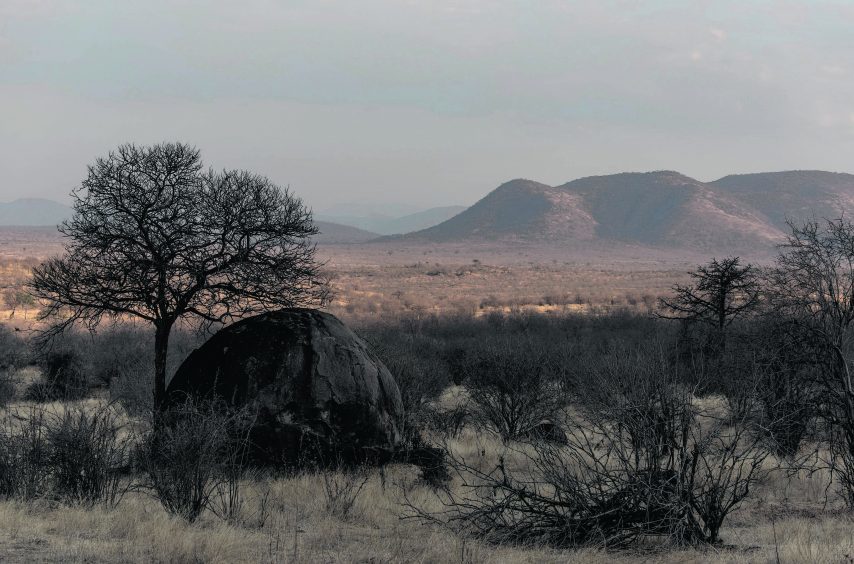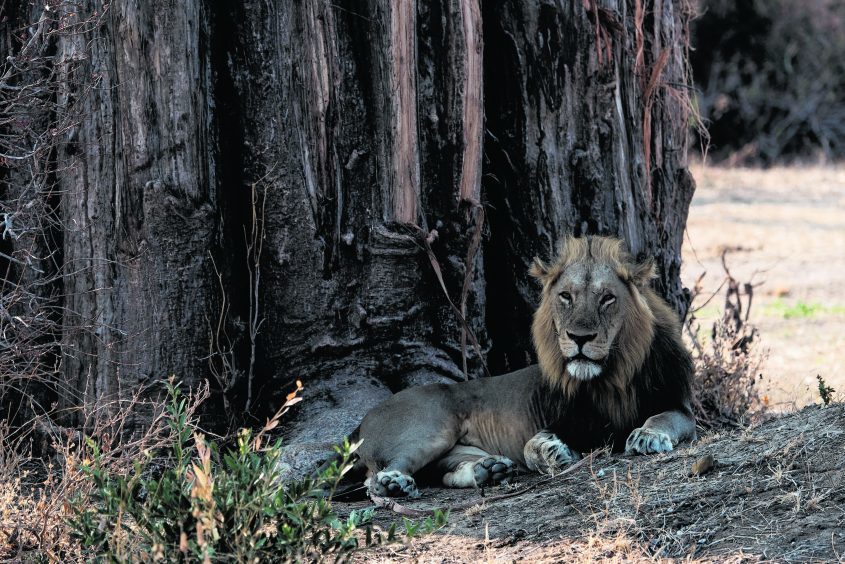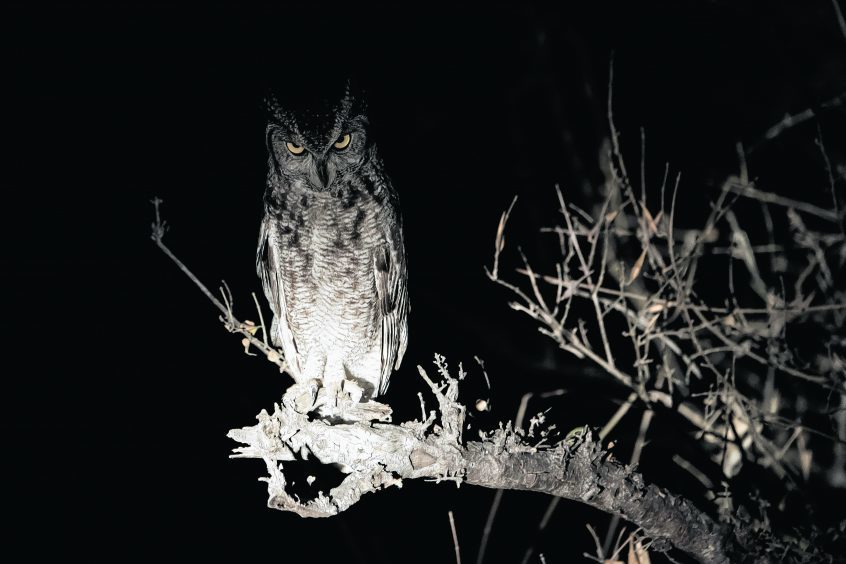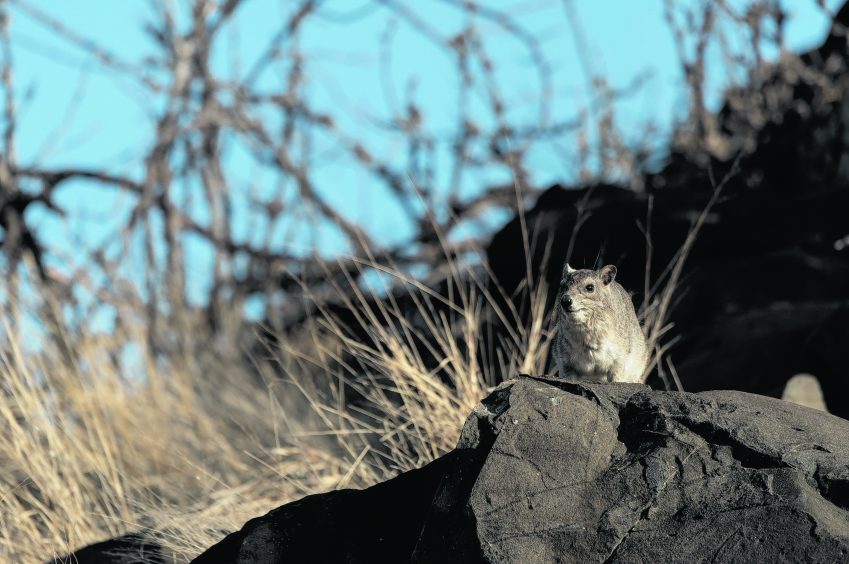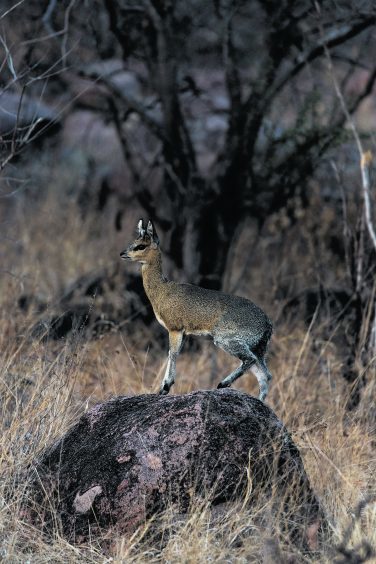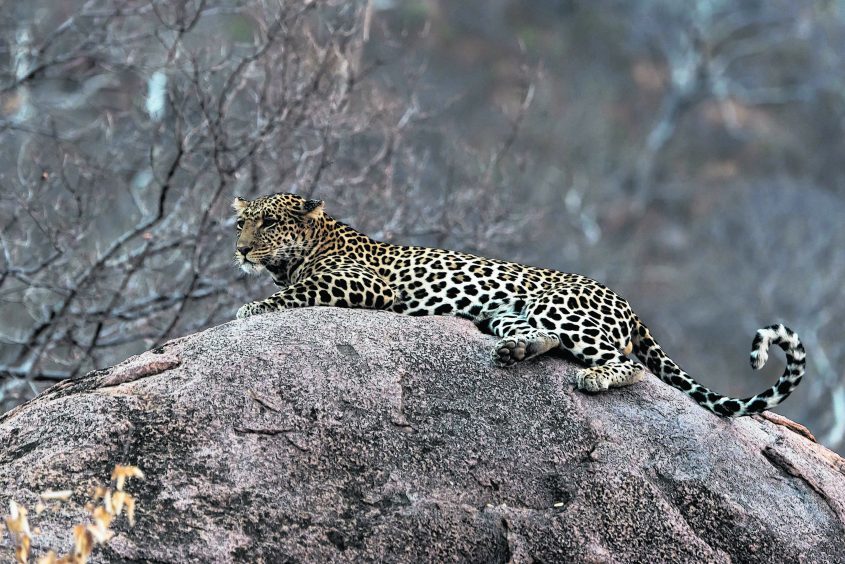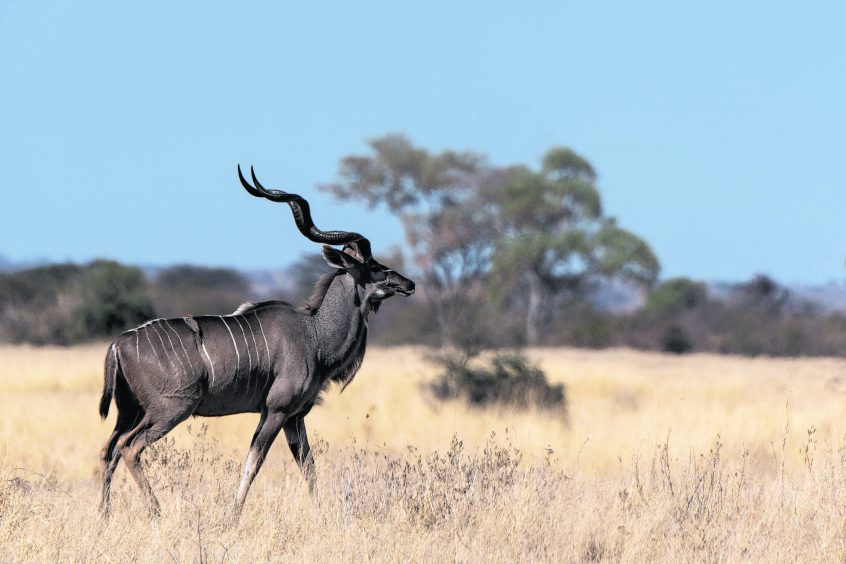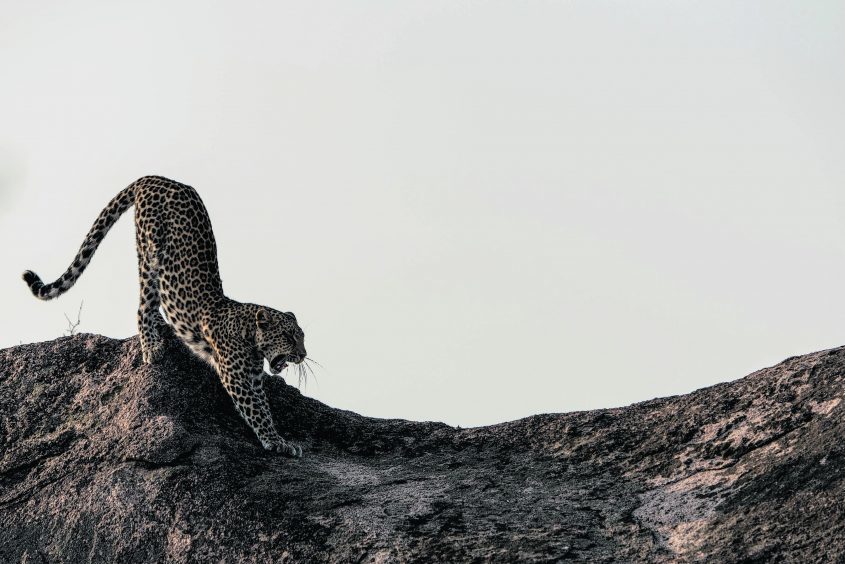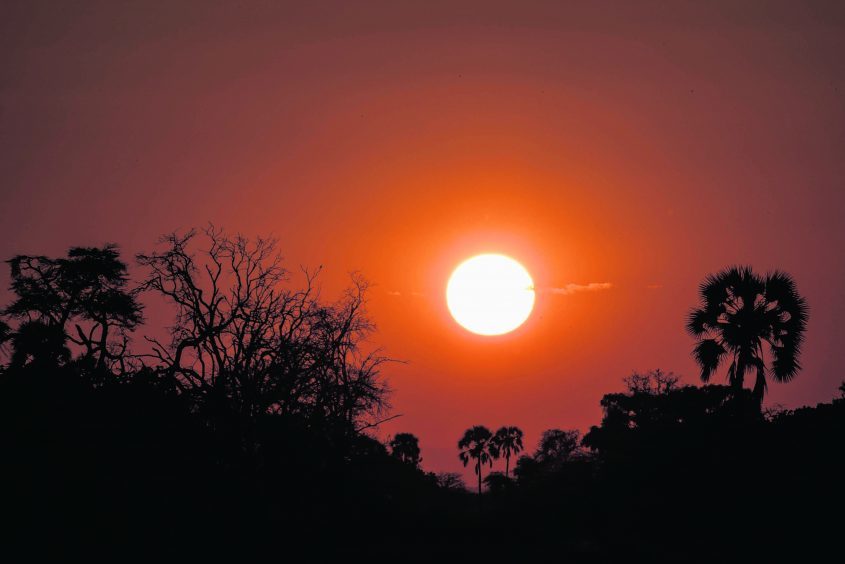Tanzania’s largest national park is home to one of Africa’s biggest lion populations, yet there are only seven tourist camps on site. Sarah Marshall explores the sprawling wilderness of Ruaha, and visits a conservation project praised by Prince William
Sound travels through the air at a rate of 332 metres per second, but in the hot, dusty Tanzanian bush, it seems to move
much faster.
The gruff barks of baboons combine force with the urgent snorts of impala to create a sonic signpost leading us to a clearing in the thickets. There sits a leopard, its jaws clinging to the neck of an impala, still breathing and caught only seconds before.
The leopard’s glassy eyes dart nervously from right to left as he attempts – and ultimately fails – to safeguard his prey. Two yapping black-backed jackals drive him away, and a pride of lions that, like us, has been drawn to the commotion, moves in to steal the feast.
It is true lions have a good foothold in Ruaha, the largest national park in Tanzania and indeed East Africa; 10% of Africa’s population are believed to roam here. The sprawling wilderness, encompassing rivers, mountains, acacia forest and swampland, is also home to myriad predators and one of the biggest elephant gatherings in the continent.
Yet most of the park remains untouched. There are only seven tourist lodges occupying a game-rich 5% of the 20,000km sq area.
Realising Ruaha’s potential, the Asilia Africa safari group took over operation of the six-tent earlier this year, and they have plans to open an additional luxury lodge.
On my way to Kwihala, I pass a metal sign hanging above the park entrance, which seems to say it all: Discover the Undiscovered. It’s a message of great promise for the days ahead.
I’m visiting in October, the dry season, when most of the dense foliage has disappeared, leaving a brittle skeleton of branches and twigs, through which game can easily be spied. Cartoonish baobab trees punctuate the landscape, some bulbous and swollen, others gnawed like apple cores by hungry elephants. Their spindly, outstretched branches are seemingly begging the sky for rain.
We stop at the seasonal Mdonya River, now a dusty sand bed. Only clusters of towering date palms indicate water still flows below the ground, although a herd of astute elephants, busy excavating the dust, has clearly cottoned on.
A flock of yellow-throated sandgrouse glides above wispy fronds of thatching grass, while hyrax scurry into the cracks of granite kopjes, escaping the now searing midday sun. It’s our signal to head directly to camp, where an al-fresco communal lunch with fellow guests is followed by a long siesta in the shade.
The possibilities for game viewing in Ruaha are undoubtedly rich, yet there’s woefully little data about the number of animals present. It’s one of the reasons why Professor Amy Dickman started her Ruaha
Carnivore Project (RCP) in 2009. The wildlife conservationist – whose work was applauded last year with a nomination for a prestigious Tusk Award for Conservation at a ceremony attended by Prince William – works closely with lodges in the park to collect data on predators. Guides are given cameras to record sightings and, as an incentive to work harder, after a year or 125 sightings, they’re allowed to keep the kit.
“Ruaha supports some of the most important wildlife populations left in the world,” says German-born Prof Dickman, whose project HQ is located just outside the park gates. Members of her team can join Asilia guests on a game drive or for dinner, to explain how RCP is benefiting both wildlife and communities in and around the park.
Much of their work is focused on lions, a species seriously under threat.
“There are now fewer wild lions in Africa than rhinos,” says Prof Dickman, quoting a current estimate of 20,000. “That fact is shocking to most people who just don’t realise how sharply lion numbers have dropped in the past 20 years.”
One of the biggest problems is community conflict, something I learn more about when I visit the RCP camp. There are 22 villages close to the park with more than 40,000 residents, a mixture of Masai and Barabaig tribes, who are mainly pastoralists. Many have lost precious livestock to predators, and have responded with retaliatory killings, often poisoning carcasses in the hope of preventing any future attacks and as an act of angry retribution.
“It took a long time for us to gain the communities’ trust,” says Sonja Lipenga, Prof Dickman’s second in command, as we share a meal of beans and ugali around a simple camp table. Eventually – and somewhat unexpectedly – a breakthrough came with mobile phones.
“We allowed people to charge their phones here for free and, while they were waiting, took the opportunity to discuss problems with livestock and predators.”
RCP now assists villages with the construction of stronger wire bomas (enclosures for livestock), which have been almost 100% successful, and also offers tangible benefits of education and veterinary medicine, in exchange for co-operation.
Traditional killings also pose a serious problem for lions and elephants in Ruaha. In previous years, young men would regularly organise hunts with an ambition to be the first person to spear a target, thus becoming the “owner” of a kill and subsequently showered with attention by members of the opposite sex.
But RCP has come up with a solution and – so far – it seems to be working well.
“When we realised the real attraction of these hunts was an opportunity to celebrate and socialise, we decided to set up an alternative,” says Ms Lipenga. Now RCP arranges gatherings completely disconnected from any hunts, which still allow men and women to dance together and form bonds. And instead of a severed lion paw, several young men from the warrior age set now proudly display a GPS unit on their belts, supplied by RCP to collect important wildlife data.
Engaging the support of communities is vital to the conservation of predators in Ruaha, and Prof Dickman and her team are doing a fine job of strengthening links between people, wildlife and tourism.
This is still an excellent place to observe lions in Africa, which is why last July, one professional photographer came to stay at Kwihala for 19 nights to capture prides hunting buffalo. He got the shots he wanted, I’m told by Lorenzo, my excellent, Italian-born safari guide, who, like many seasoned naturalists attracted to Ruaha, can’t bring himself to leave.
If organised in advance and accompanied by a park ranger, it’s possible to go on night drives in the park, so on my final evening, I stay out long after dark. Once again, sound becomes our key pinpointer, with shrieks, growls and chattering mapping our journey. Now temperatures have cooled, wildlife is even more abundant, active and hungry.
A spotted an eagle owl perched on the edge of a branch overhanging
the road, its gaze too intently fixed on small rodents to notice our presence. A few metres along the track, we find a lesser spotted genet with a scorpion dangling from its mouth, and a flick of the spotlight illuminates the gleaming eyes of a leopard stalking a
scrub hare.
We sit quietly as the young cat hunches its shoulders, finally powering forward like a fully loaded spring and giving chase. Predator and prey disappear into the darkness, leaving us to guess the outcome.
It doesn’t matter. In Ruaha, it’s the undiscovered and unknown that proves to be equally as thrilling.
